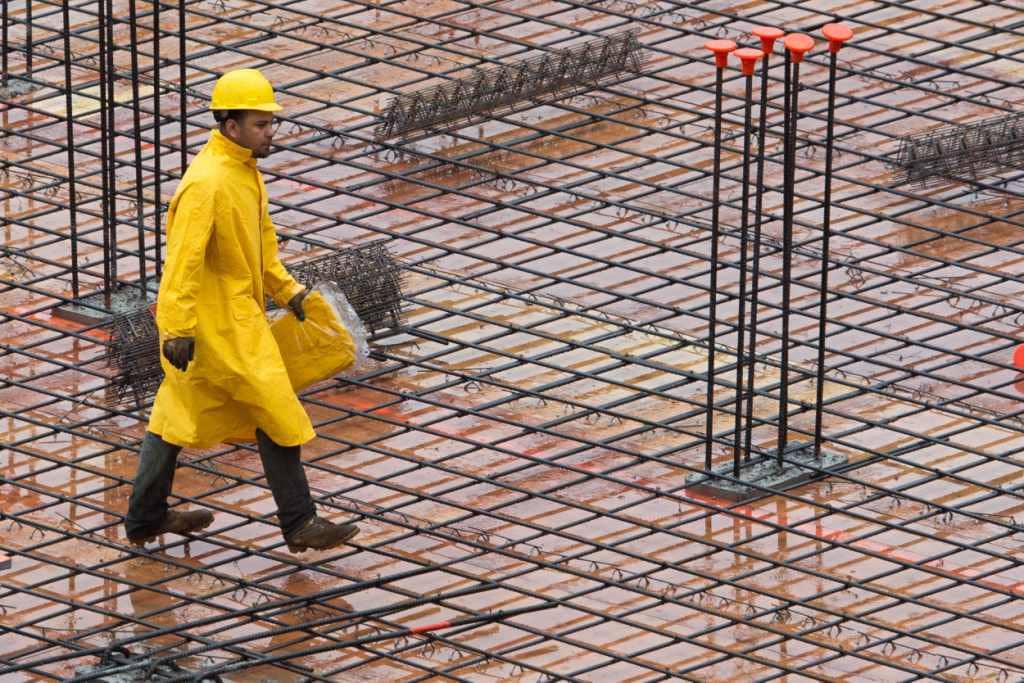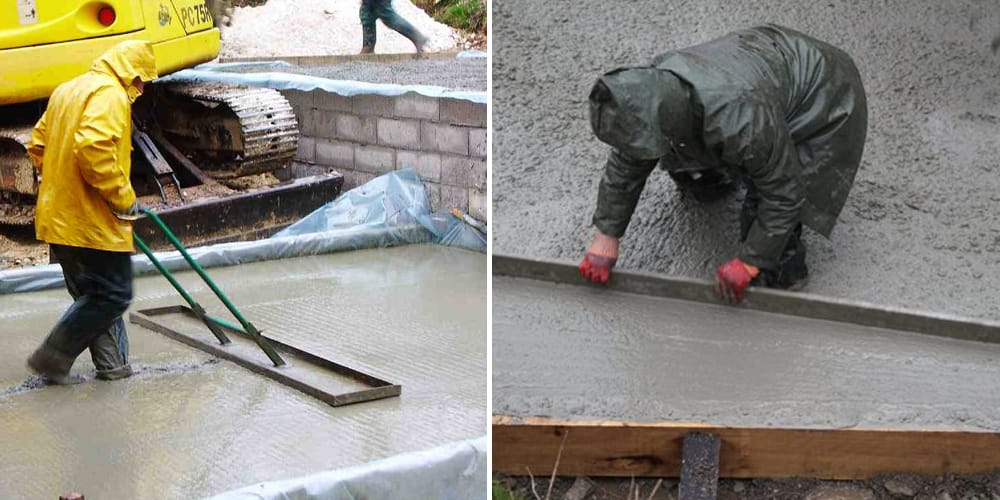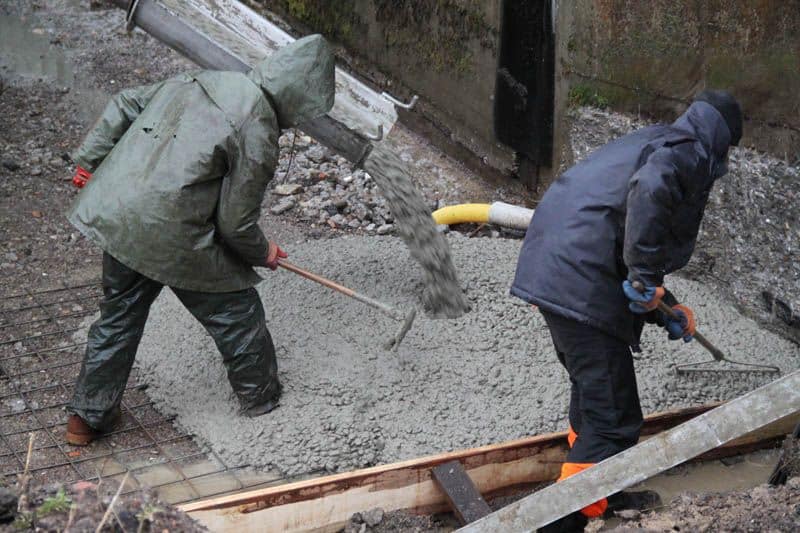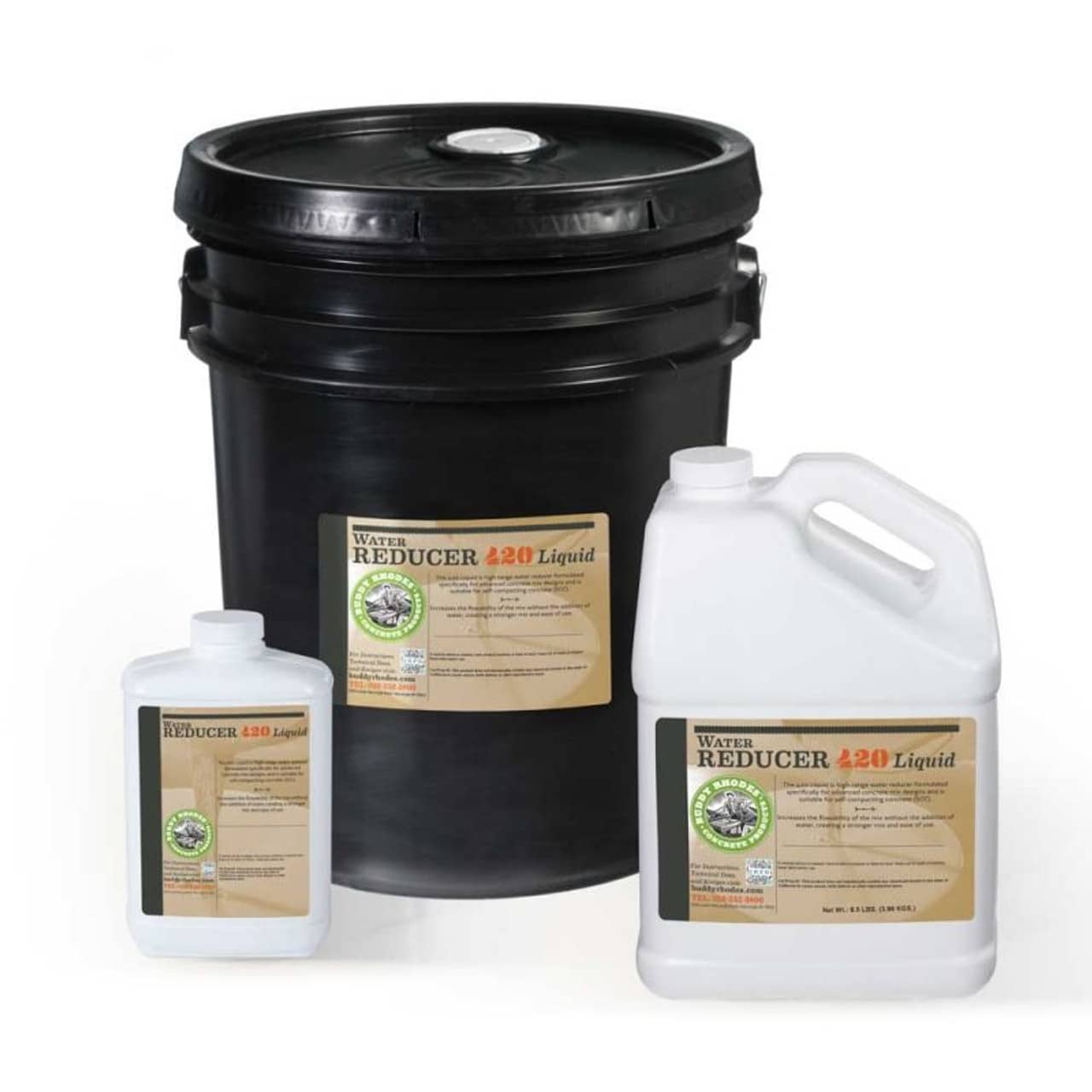Pouring Concrete In Rain: What You Need To Know

When it comes to pouring concrete, rain can cause several problems. In this comprehensive blog post, we will discuss everything related to pouring concrete in rain and how to avoid potential issues that may arise. We’ll also reference our previous posts on cold weather concreting and hot weather concretingto give you a better understanding of how different weather conditions impact the pouring and curing of concrete.
Can You Pour Concrete in the Rain?

The short answer is yes, but there are potential issues to consider when pouring concrete in the rain. One of the primary concerns when pouring concrete in wet conditions is the impact of excess water on the concrete mix. A wetter mix can lead to weak concrete, making it more susceptible to surface scaling and damage from freeze-thaw cycles. To avoid these problems, it’s essential to take proper precautions before and during the concrete pour. Some of these precautions include monitoring the weather forecast, ensuring proper drainage at the pour site, and using plastic sheets to protect the fresh concrete from rainwater.
How Long Does Concrete Need to Dry Before Rain?

Ideally, freshly poured concrete should be protected from rain for at least 24 hours to allow it to set and gain enough strength to resist rain damage. However, the specific drying time may vary depending on factors such as the type of concrete mix, the ambient temperature, and humidity levels.
Concrete Pouring Steps and Precautions in Rainy Conditions
1. Monitor the Weather Forecast
Keep an eye on the weather forecast to determine if rain is expected during the pouring and curing process. If heavy rain is predicted, it’s best to reschedule the concrete pour for a day with better weather conditions.
2. Prepare the Pour Site
Ensure that the pour site has good drainage to prevent standing water and water-filled cavities. Trenches dug around the pour site can help divert water away from the concrete in the rain.
3. Adjust the Concrete Mix
To compensate for the additional water that may be introduced by rain, consider using a concrete mixture with a lower water-cement ratio. This can help maintain the structural integrity of the finished product. For more information, read our blog post on how to choose the right concrete mix.
4. Protect the Fresh Concrete
Cover the freshly laid concrete with plastic sheets or waterproof covers to prevent rainwater from entering the concrete surface. Temporary shelters can also be set up over the pour site to shield the fresh pour from rain.
5. Perform a Simple Scratch Test
To determine if the concrete has set enough to withstand rain, perform a simple scratch test by dragging a key or similar object across the surface. If the concrete resists the scratch, it’s likely strong enough to handle rain.
6. Remove Excess Water
If rainwater does find its way onto the concrete surface, remove it as soon as possible. Excess water can be sponged or vacuumed off the surface to prevent it from affecting the concrete’s strength.
7. Allow the Concrete to Cure
After the rain passes, continue to protect the concrete from additional rain and moisture to ensure proper curing. The curing process can take anywhere from a few days to several weeks, depending on the specific mix and weather conditions.
Common Issues with Pouring Concrete in Rain and How to Fix Them

Rain Damaged Concrete
If the concrete surface has been damaged by rain, it may be necessary to repair or replace the affected areas. Surface scaling,hairline cracks, and other forms of surface damage can often be repaired using specialized concrete repair products. In more severe cases, it may be necessary to remove and replace the damaged concrete.
Excess Water in the Concrete Mix
If the rain has caused excess water to be introduced into the concrete mix, it can lead to a weaker final product. To mitigate this issue, carefully monitor the water-cement ratio and adjust the mix as necessary.
Properly Covered Concrete
It’s essential to ensure that the concrete is properly covered and protected from rain. Failing to do so can lead to surface damage and reduced structural integrity. Use plastic sheeting, waterproof covers, or temporary shelters to shield the concrete from rain.
Standing Water and Drainage Issues
If standing water is present on the pour site, it can impact the concrete’s ability to set and cure properly. Proper drainage is crucial to prevent water from pooling around the concrete. Make sure trenches are dug around the pour site to divert water away from the concrete.
Additional Tips for Pouring Concrete in Rainy Conditions

1. Hire a Professional Concrete Contractor
Working with an experienced concrete contractor can help ensure that your concrete project is completed correctly, even in rainy conditions. A professional contractor will be knowledgeable about the necessary precautions and adjustments needed to pour concrete in the rain.
2. Allow for Additional Drying Time
When pouring concrete in rainy conditions, it’s essential to factor in additional drying time before the concrete can be considered fully cured. Rain and high humidity can slow down the curing process, so plan accordingly.
3. Use Concrete Admixtures
Admixtures can be added to the concrete mix to help improve its performance in wet conditions. Some admixtures can help accelerate the curing process, while others can increase the concrete’s resistance to water penetration.
4. Be Prepared for Rain During the Pouring Process
Even with careful planning and monitoring of the weather forecast, rain can sometimes be unpredictable. Be prepared for the possibility of rain during the pouring process by having the necessary equipment and protective measures in place.
5. Maintain Communication with Your Concrete Contractor
Throughout the entire pouring and curing process, maintain open communication with your concrete contractor. This will ensure that any potential issues are addressed promptly and that the project stays on track, even in rainy conditions. In conclusion, while pouring concrete in rain is possible, it requires careful planning and preparation to avoid potential problems. By taking the necessary precautions and following the advice outlined in this blog post, you can help ensure that your concrete project is successful, even in the face of unpredictable weather conditions.
